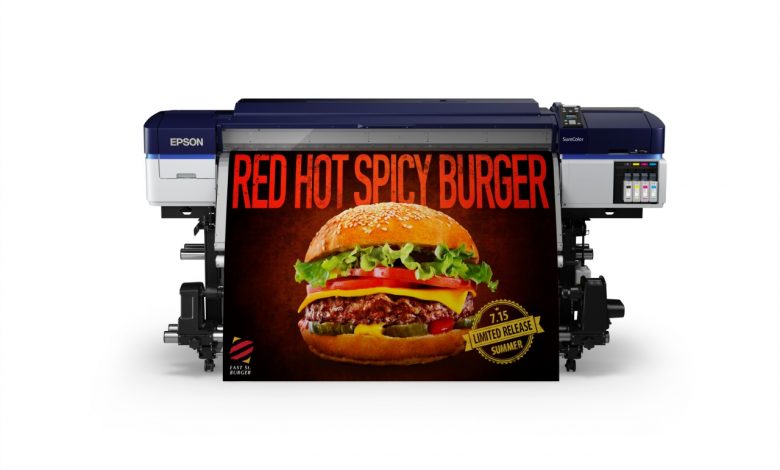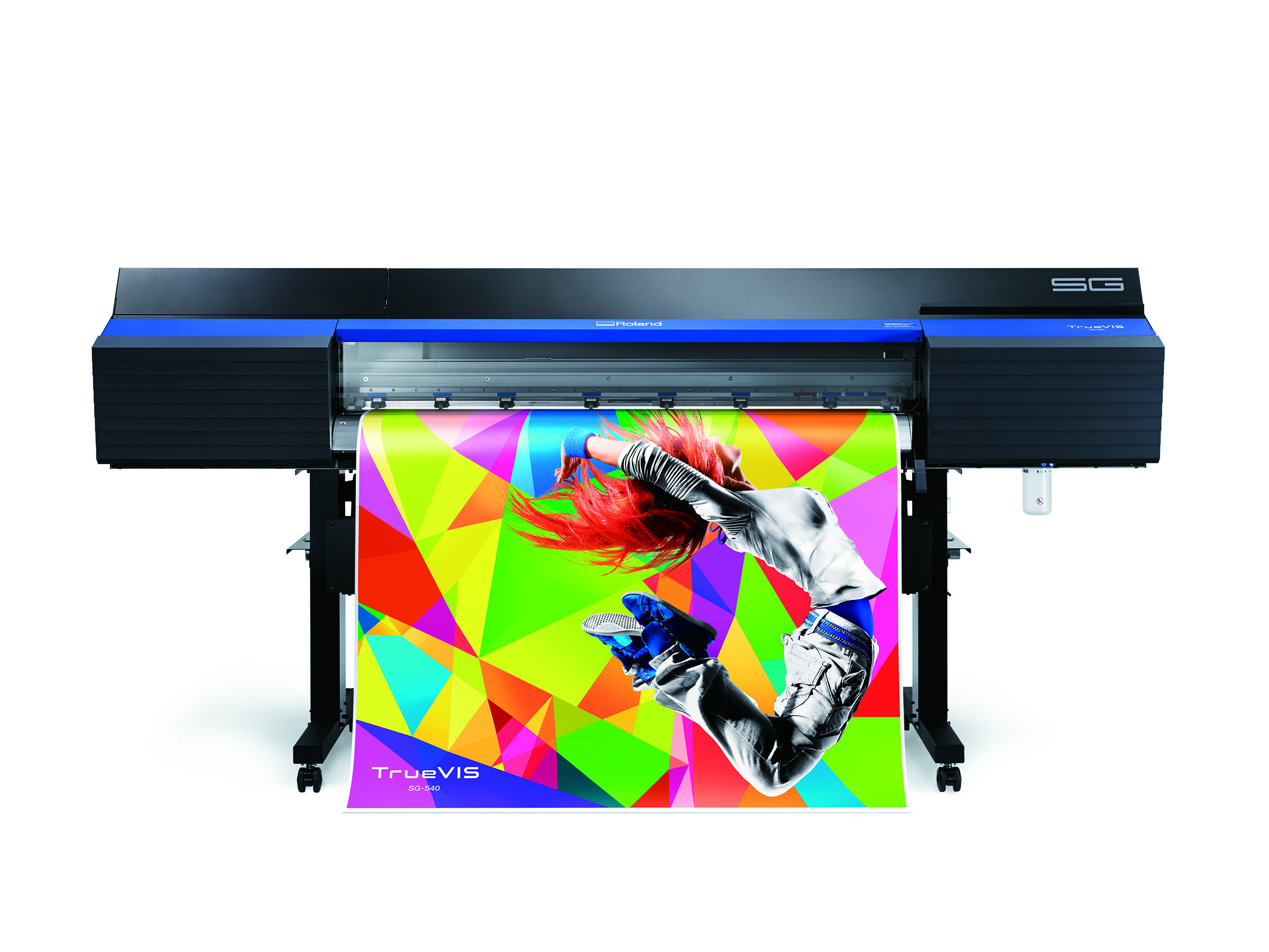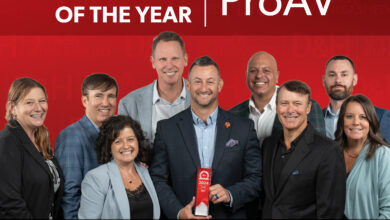Buying Your First Wide-Format Printer
Non-traditional print businesses are seriously considering adding wide-format printing to their list of services
With the demand for wide-format signage on the rise, we are continuing to see a trend where more non-traditional print businesses are seriously considering adding wide-format printing to their list of services. As a result, print shops, screen printers, wrap install businesses, promotional product firms, and other pay-for-print providers are now in the market for their first wide-format printer. They realize that by integrating wide-format inkjet technology into their current workflow, they can expand into new markets and unlock new profit opportunities.
If you are in the market for an entry-level model, it is critical to research equipment that best suits your shop’s specific needs. Besides creating a business plan for this significant capital expenditure, there are also several questions you must first ask yourself and some criteria that must be met to fully ensure that this integration will be a smooth and profitable fit for your shop.
To get a better handle of what goes into the whole buying process, we spoke with a number of the top printer manufacturers and quizzed them regarding what are some of the essential points to consider and questions to ask when purchasing your first wide-format printer. We also asked them to make some suggestions from their product portfolios that will give you the most machine for your money.
Where do you start? Researching and analyzing your businesses’ needs
“Whenever I speak with someone just getting into the graphics market, the two most important factors for a new printer are always versatility and ease of use,” notes Matt McCausland, product manager, professional imaging at Epson America Inc. “Surprisingly, very few printers on the market today do both of those things really well. The other key part, not related to the actual printer, is to find a reseller you feel comfortable with that will help you get through the steep learning curve of entering the graphics market,” he adds.
Mark A. Rugen, director, product marketing and education, Mutoh America Inc., says the first place businesses will start when looking for a wide-format printer is Google. They may type phrases such as ‘Best wide-format printer’ or ‘What is the best wide-format printer?’ and disappointingly, they will find out that the term ‘wide-format printer’ is used for everything from 18″ W and above, and many are for the photographic business.
“I suggest that if you are searching for a wide-format printer, you need to add these phrases. Perhaps search for ‘best wide-format printer for sign making’ or ‘best wide-format printer for vehicle wraps.’ Adding the purpose for the printer will result in a more accurate listing of possible pages to investigate. It’s best to determine what you want to use the printer for before you begin your search online,” adds Rugen.
Daniel Valade, product manager of digital print, Roland DGA, also suggests that before purchasing a printer, inks, and other consumables, the print service provider should first determine the customer demand for the types of products/services they are considering offering. He adds that research and analysis should be done, not only on what customers are looking for and how to attract them but also on the competition and the markets those operations are focusing on.
“Assuming the demand is sufficient to support the decision and allow for future growth, a shop owner can then proceed to researching the best printer for handling those specific applications. This looks at the type of substrate being printed on, and therefore the type of ink and printer, which will be required. The next decision would be the productivity (quantity of items in what amount of time) required, which will help determine the size of the printer as well as the size of the investment,” says Valade.
What profitable end products can a wide-format printer produce?
“When it comes to ‘profitable end products,’ the term used most often is ‘applications.’ So start by thinking about what applications you want to create with your printer. This also leads a newbie to think about who their customer base will be. Are they going to be selling products online and shipping them or are they going to have a retail shop and sell locally, or both,” Rugen explains.
“You certainly would not sell a vehicle wrap online, but you could sell cut or printed decals that consumers could put on their vehicles. The types of applications are unlimited, but the choice of application may also determine the kind of ink that the printer will need as well as the size printer. Smaller items, such as awards, key chains, pens, etc. might require a UV ink and perhaps a smaller, almost desktop size printer, while vehicle wraps would require eco-solvent or latex inks and require a 64-inch-wide printer,” Rugen adds.
Valade suggests, for print service providers who are just getting into wide-format printing for the first time, an eco-solvent printer. This printer offers the most capabilities for traditional signage such as banners, posters, walls, and wraps. “For those wanting to offer printing on textiles and rigid substrates for things like soft-signage, high-end POP displays or customized goods and promo products, dye-sublimation printing is a great option. Lastly, for a shop that wants to concentrate on creating personalized products or print on unique substrates such as wood, metal, acrylics, and three-dimensional products, a UV flatbed printer is an excellent choice. Roland provides options in all three of these printing technology types.”
McCausland notes that when looking to find a cost-efficient entry-level solution, solvent printing (primarily known for signage) can be a versatile resource for a range of printing needs, including fine art reproduction, vehicle wraps, photographic prints, canvas prints, stickers, vehicle wraps, decals, labels and more. He adds the versatile media compatibility, outstanding durability, weather and scratch proof output are ideal for outdoor signage, banners, posters and advertising.
How much should shops expect to spend on a first machine?
Valade reports that the price will depend upon the specific type and size of the printer. “A four-color eco-solvent printer/cutter with integrated printing and contour cutting capabilities like Roland’s 54-inch wide TrueVIS SG-540 has an MSRP of $12,995, while the 30-inch SG-300 costs $9,995 MSRP. Roland printers come with Roland VersaWorks RIP software, which saves thousands of dollars over having to buy software to run the printer,” says Valade.
“Some models include a media take-up unit, while others would require a separate take-up. There are other costs to consider (i.e., inks, materials, and finishing equipment). Still, it’s possible to get a new wide-format printer for under $10,000, ranging up to $25,000-$30,000 for higher productivity models,” he adds.
“For the first machine, a shop can expect to spend anywhere between $10,000-$20,000 on the printer and finishing equipment,” says McCausland. “In addition to the printer, shops will want to install a laminator and/or cutter. Epson recently launched the SureColor S40600 Print Cut Edition that would be ideal for an entry-level shop. The bundle package includes the Epson SureColor S40600 roll-to-roll printer, Graphtec cutter, and ONYX software to maximize productivity and streamline workflow.”
Rugen reports that most commercial printers these days range from $7,500-$90,000. The cost will be directly related to the size of the printer as well as the ink type. However, many shops expect to set aside about $25,000 for a typical 64″ eco-solvent printer because of the range of projects, or applications, it can produce.
“The main concern is getting enough business to pay for the machine as quickly as possible, so it is wise to choose a printer that can do a wide range of projects as a started to open up market possibilities. As the shop gains business, it can then invest in more specialized equipment.”
How much shop space is needed? How long does it take to become proficient? Is a warranty necessary?
McCausland says that it takes time to become proficient in the machinery and software. “I would estimate approximately 1-3 months for the machinery and 1-3 months for the accompanying software and RIP systems.”
“For an entry-level sign shop, warranty for equipment is necessary. The equipment needs to be running for the business to be successful; a new sign shop cannot afford for the machinery not to be working correctly,” he says.
“The amount of space needed will depend on the size of the printer being purchased and any other finishing equipment needed for desired applications. This can include a laminator, a prep table, and other post-print processing equipment needed. It’s important to ensure you have sufficient room not only for the printer but also for laying out graphics and storing materials,” states Valade.
Rugen adds that resellers of wide-format printers can assist in determining shop space and should do so. He says that the placement of these devices will require a clean room, as dust-free as possible, and environmentally controlled (heat, cool, and humidity). Also, most projects will require some ample table space for preparing the application for mounting on boards or other rigid media. Will the finished project need to be protected with a laminate? If so, count on doubling that space required for just the printer itself.
“In addition to the wide-format printer, the shop will need a computer and software to design and run the printer. It can take some time to become proficient in using these programs, and we highly recommend attending a training class or seminar to become more efficient. This can save hours on the learning curve, and if it is a group setting can allow the beginner to ask questions on many topics with more experienced users in the room.
Of course, most machines will come with a warranty, and yes, it is needed. In fact, many extend this insurance against machine issues. The more business you get, the more the printer will be used, and at some point, it may need adjustment or repair, and since it is the life-blood of the shop, warranties can make this affordable and efficient.”
What are the pros and cons of available ink types they can choose from?
“With so many technologies to choose from, it’s best to weigh your options based on what you expect your focus will be,” says Valade. “Traditionally, users looking to have a well-rounded offering of applications will choose an eco-solvent printer or printer/cutter to get started, as they offer the most commonly requested applications, like outdoor signage, posters, banners, apparel heat transfers, and labels/decals,” he adds.
Valade points out that Roland offers some entry-level eco-solvent inkjets, including the VersaEXPRESS RF-640 printer and the TrueVIS SG series printer/cutters.
“For users looking to get into a less traditional but fast-growing market such as product personalization/customization, UV or dye-sublimation inks allow for a wide range of unique applications that can differentiate a PSP from the competition,” Valade explains. “We are seeing a general trend where users start with eco-solvent devices/inks for the versatility and, as they start to understand other applications customers are asking for, expand into one of the other technologies.”
Rugen points out that ink types, in part, determine the kinds of applications that can be made with a wide-format printer. “Eco-solvent has been the longtime favorite for most startups because of the diversity of materials that be used. One drawback is that the ink uses a solvent to disperse the ink and time is needed for that solvent to vent away before laminating. A significant advantage of eco-solvent is its outdoor durability; many applications can last for years,” he says.
Latex ink has become popular of late because the ink is cured upon leaving the printer and thus can be laminated immediately. One drawback, however, is that the ink resides on the surface of the printable materials, and many times an adhesion optimizer must be used to assist in ink adhesion. Also, most of these types of printers require high heat to cure the latex, and that can limit the types of media that are compatible with those heats.”
UV curable inks are cured using an LED light, so they are instantly dry. “In addition, there are numerous applications for both roll-to-roll and rigid materials. Some printers called “hybrids” can even do both types of applications, making them very adaptable to many jobs. Once again, the ink resides on the surface, so some scratch resistance is lowered, and adhesion may require a promoter, but overall the inks perform well.”
Dye sublimation inks vary from one manufacturer to the next, and the dye-sublimation and textile printing market can be complex regarding choice in materials and inks. “In addition, sublimation requires the use of heat presses, and that is an added cost to this ink usage. However, the products produced using dye-sublimation are long-lasting, and anything with a polyester coating can be printed,” says Rugen.
In signage, offering color consistency is necessary. McCausland says, “Print shops must be ready and able to offer an expanded color gamut and successfully match any color a client throws their way. The solvent ink industry is evolving due to rapid advancement in technology and ink chemistry – now allowing PSPs to reach 98% Pantone and ensure efficient, precise and repeatable performance. Ink technology has expanded outside the traditional CYMK color scheme, with successful formulations for red, white and metallic silver in higher-end signage printers, such as the Epson SureColor S80600.”
He points out that solvent ink chemistry and technology embeds colorant into the media to establish a more permanent bond between substrate and ink, penetrating media to form a durable bondable to withstand water, scratching and fading. In contrast, latex inks lay on top of the substrate and never fully take on specific attributes of the substrate, resulting in duller, less consistent color. One of the primary drivers of this is the matching of ink and piezo printhead technology. For example, our latest generation Epson PrecisionCore TFP print heads deliver incredible accuracy and color consistency, so print shops can be confident in producing the right colors for their customer’s brands and projects.”
How do you justify the cost? How much do I need to sell?
Valade says it is important that determining how much business you would need to generate to cover the investment and operation costs of your first printer. He points out that the dealer you are purchasing from should be able to assist with some general benchmark calculations based on ink and material costs, running time and average selling costs. Those will help determine what profit you can make per item (or per hour) that you print, which in turn will tell you how quickly you’ll pay for your investment and how much you can make on an ongoing basis.
“To figure out how to pay for a wide-format printer, simply start with the cost of the machine and then use your selling prices for applications. If you can define what applications you will be producing and what you are charging for them, you will probably find that an average shop will pay for a $25,000 printer in less than three years,” says Rugen.







